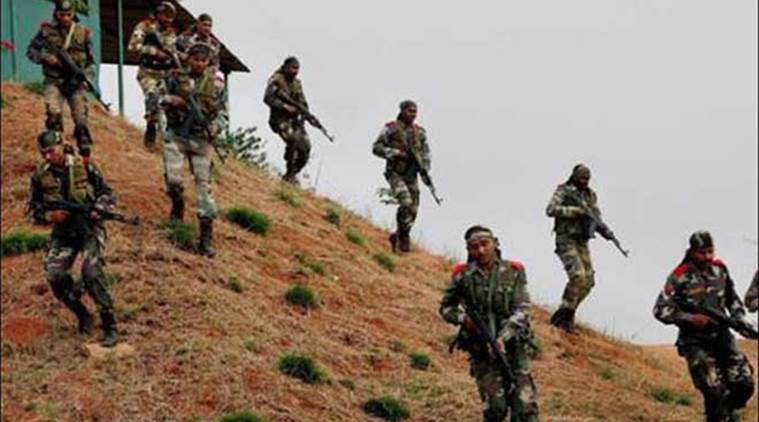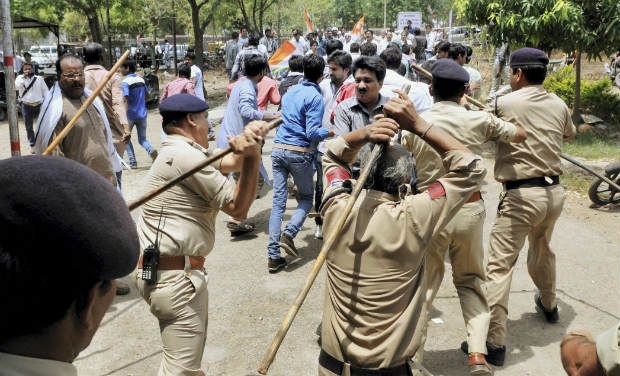In a first, special security personnel of Chhattisgarh burnt effigies of petitioners, activists and journalists in Jagdalpur in Bastar region of the state on Monday.
The incident came just days after the Central Bureau of Investigation published its final report on a 2011 event in which nearly 300 homes were burnt. The report confirmed the role of the security forces in the incident.
The Effigies that were burnt
According to a report in The Wire, WhatsApp messages titled ‘Big Breaking News’ were sent to journalists and others, announcing plans to burn effigies of petitioners Nandini Sundar, a professor of Sociology at Delhi University and CPI leader Manish Kunjam, and rights activists Bela Bhatia and Himanshu Kumar at 3.30 pm on Monday.
This is new.. State against media & civil society. In Chhattisgarh, @drramansingh‘s Govt burnt effigies of journalists and activists. pic.twitter.com/IavjwWAacv
— Gaurav Pandhi (@GauravPandhi) October 25, 2016
The gathered personnel (members of auxiliary forces) also burnt mock ups figures of Scroll journalist Malini Subramaniam and AAP leader Soni Sori.
After burning the effigies with much fanfare, the uniformed security personnel paraded around nearby streets in a show of strength.
The ‘protest’ took place after the inspector general of police for Bastar, SRP Kalluri, held a press conference on the issue of the 2011 violence in the tribal village of Tarmetla, and other nearby villages in Chhattisgarh’s Sukma district. He claimed that security forces were not responsible for the incident. He also allegedly made threatening comments against the activists in question, thus spurring on the security personnel.
Kalluri claimed that the houses caught fire naturally due to excessive heat. In 2011, however, security forces had claimed that the villages had been torched by Maoists. Kalluri was in charge of the 2011 operation.
2011 Violence – What happened?
In March 2011, based on a tip off by a former Maoist, Special Police Officers (SPOs), along with CRPF’s elite CoBRA force and Koya force, raided several tribal villages in the Dantewada forests region in search of an alleged Maoist arms factory. According to eyewitness reports, the forces burnt down huts and granaries of the villagers, molested women, and carried out executions and looting.
A report in The Hindu claims that security troops burnt nearly 300 homes during the raids.
The incident took place some months after a clash between Maoists and security forces which left 76 security personnel dead. Four Maoists were killed in the attack.
Two weeks after the alleged torching, known social worker and activist Swami Agnivesh’s convoy was attacked by Special Police Officers and members of Salwa Judum (an armed, anti-Maoist tribal outfit) , while he was travelling to conflict areas near the Dantewada forests to provide relief material to villagers.
The Aftermath
Nandini Sundar, according to a report in The Indian Express, claimed that security forces had pillaged and torched Morpalli, Tadmetla, and Timmapuram, among others, burnt over 250 women, killed at least three men and raped three women.

In July, the SC ordered a CBI probe into the matter. The CBI has presented its final findings last week, which confirm that at least 160 houses in Tarmetla had been burnt by security forces during the five day anti-Maoist raid. CBI has filed chargesheets against 7 special police officers (SPOs) who were in charge at the time.
Based on a PIL filed by Sundar and others, the SC also disbanded the Salwa Jadum group and movement, and banned the practice of recruiting civilians/tribals to armed, anti-Maoist forces.
The government’s response was to change the name of the Special Police Officers, calling them Auxilliary Police Personnel instead. Sundar filed yet another PIL in the SC, claiming that the Chhattisgarh government was in contempt of court, though the court refused to accept the contention recently.
Current Status
Several activists, journalists and members of civil society have been raising their voices against the use of extreme force by the police and security forces in the state. Many fear that the state is increasingly becoming a police state, with no room for dissent.

Journalists and activists who report on violence by security forces and custodial beatings and deaths in Chhattisgarh prisons are often pressurized by groups, which allegedly include members of political bodies/parties and goons.
For example, activist Bela Bhatia and reporter Malini Subramanimam (whose effigies were also burnt) were forced to flee their homes in Bastar after local mobs including members of anti-Maoist tribal outfit Samajik Ekta Manch accused them of being Maoist-sympathisers. The group, which was disbanded in April this year, was often believed to just have been a reshuffle of members of Salwa Judam.
Referring to the activists, policemen told The Indian Express that they had to face allegations from ‘Naxal sympathisers’, even though the police ‘fight every day under the harshest circumstances’ to end the Maoist menace.
Feature Image Source: PTI

















